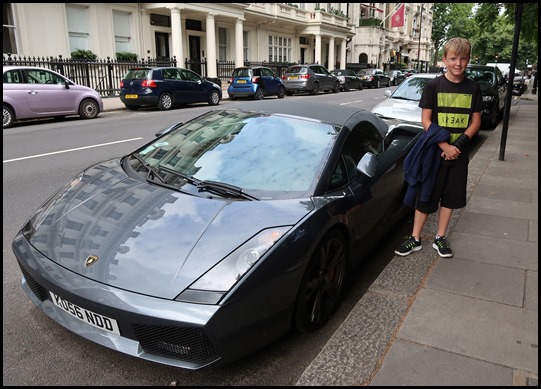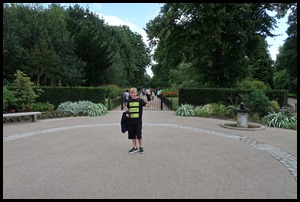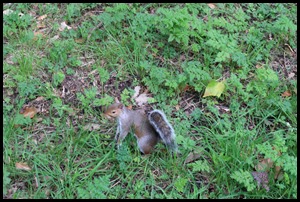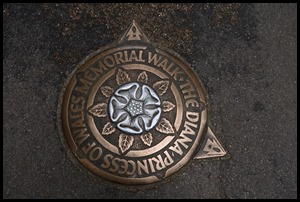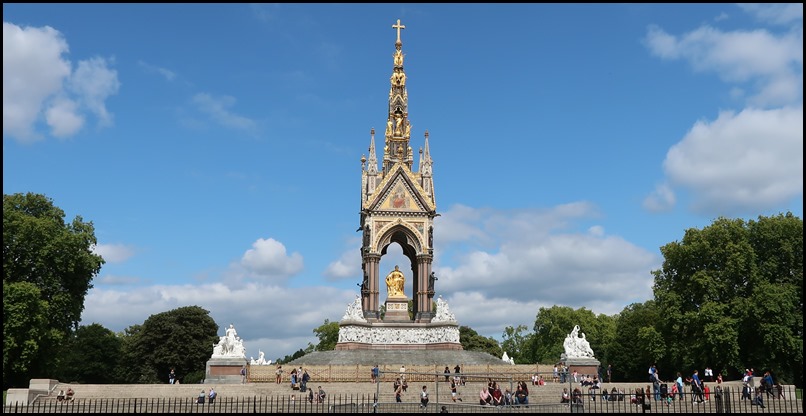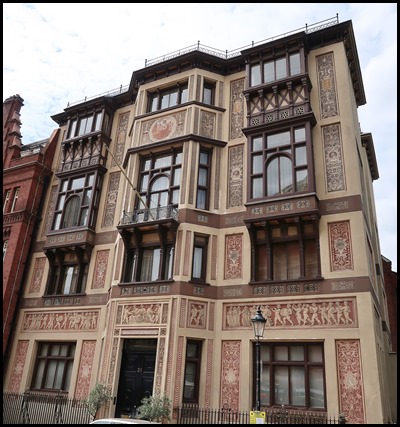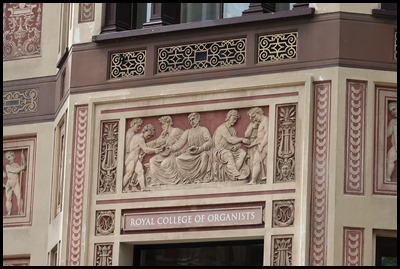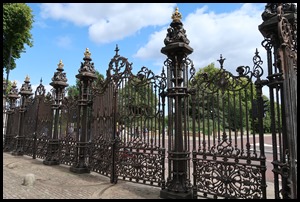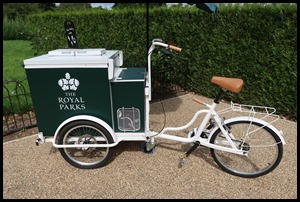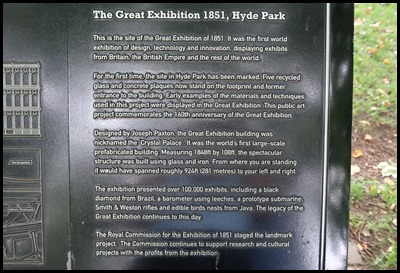First London 1

|
First London Blog – Part One 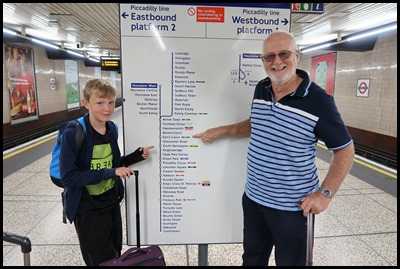 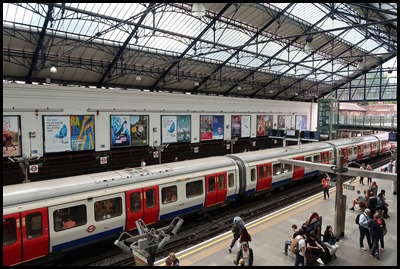 We woke in Hounslow, showered,
breakfasted and moved the car to the tube station. Parking ticket for the week
twenty four pounds, not bad at all. new Oyster cards put to the test, on the
platform, destination found and half an hour later we
popped up in Earls Court Station.
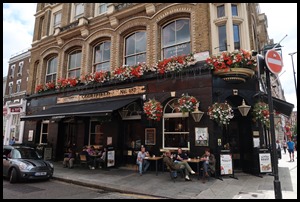  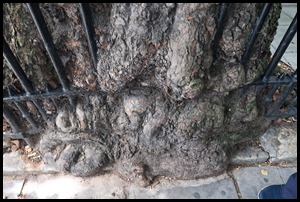 A few minutes walk to our hotel, too
early to check-in so we left our bags with a lovely man from Algeria and off we
went on our first London bimble. What a wonderful
tree.
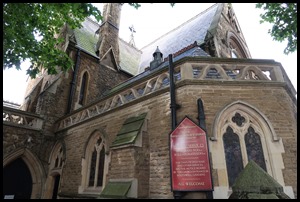 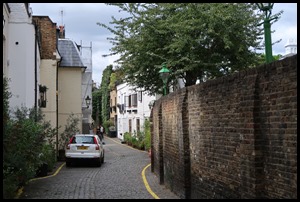 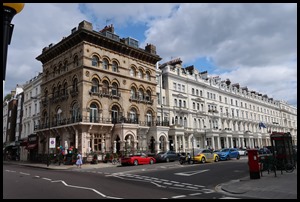 Church of St.
Stephan, a Mews and a
typical road in Kensington.
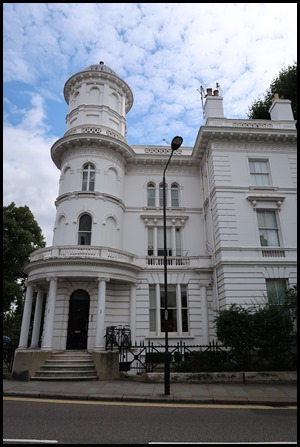  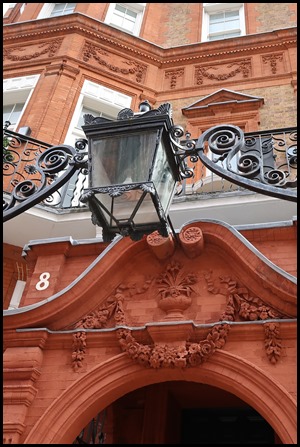 We passed a lovely house, Bear was sad that the top turret windows had been blanked off but this brought to mind a royal oddity............ In 1696, William III of England introduced a property tax which required those living in houses with more than six windows to pay a levy. Any window deemed unessential by the owner would have been bricked-up, preventing some rooms from receiving any sunlight. The tax was referred to as daylight robbery. The boys posed by a sculpture called “Unfurl” by Eilis O’Connell commissioned in 2000 by the residents of Kensington Gate. A stunning frontage.
Harley poses by his chosen ‘wheels’ in later life.
We cross the road and enter Kensington Gardens, watch a squirrel scamper and follow the Princess Diana Memorial Walk.
Nearing the Albert Memorial, from the front and closer-up.
Wiki says: The Albert Memorial is situated in Kensington Gardens, London, directly to the north of the Royal Albert Hall. It was commissioned by Queen Victoria in memory of her beloved husband, Prince Albert who died of typhoid in 1861. The memorial was designed by Sir George Gilbert Scott in the Gothic Revival style. Opened in July 1872 by Queen Victoria, with the statue of Albert ceremonially "seated" in 1875, the memorial consists of an ornate canopy or pavilion, in the style of a Gothic ciboriumover the high altar of a church, containing a statue of the prince facing south. The memorial is 176 feet (54 m) tall, took over ten years to complete, and cost £120,000 (the equivalent of about £10,000,000 in 2010). The cost was met by public subscription. The memorial has been Grade I listed since 1970. The commission to make the seated figure of Prince Albert for the memorial was initially given to Baron Carlo Marochetti, a favourite sculptor of Queen Victoria. However, his first version was rejected by the architect of the monument, Sir George Gilbert Scott, and Marochetti died in late 1867, before a satisfactory second version could be completed. In May 1868, John Henry Foley, sculptor of the monument's Asia group was commissioned to make the portrait, and his sketch model approved in December of that year. A full-sized model was placed on the monument in 1870, and the design approved by the Queen. The final statue was cast in bronze by Henry Prince and Company, of Southwark; Foley died in August 1874 before casting was complete. The gilt bronze statue was ceremonially
"seated" in 1875, three years after the memorial opened. Albert is shown looking
south, towards the Royal Albert
Hall from which the architectural form
of the memorial as a whole should not be considered as being intentionally
isolated, it having a particular connection as a result of the location,
relating to the 'World's
Fair' in which the Prince was directly
involved and as shown in the contemporary maps of the Ordnance
Survey, including in particular the
still continuing element known as the 'Battle of the Scales' (metric and
imperialist scales), there being a further statue of the Prince at the south
side of the Royal Albert Hall. In this connection his statue holds a catalogue
of the Great
Exhibition, and is robed as a
Knight of the Garter.
We crossed the road to bimble around the Albert Hall, no pictures as it is currently covered in scaffolding and plastic. So with our backs to the hall we took in the full beauty of Prince Albert.
The not oft featured building, the Royal College of Organists
Wiki says: The RCO was founded as the College of Organists in 1864 by Richard Limpus, the organist of St Michael, Cornhill in the City of London, and received its Royal Charter in 1893. In 1903 it was offered a 99-year lease at peppercorn rent on a remarkable building designed by the architect Kensington Gore, West London (next to the Albert Hall). When it became clear in the mid-1980’s that an economic rent would be charged on expiry of that lease, the lease was sold and the College moved into new accommodation in 1991. In 2003 plans were announced for more permanent purpose-built premises around the Grade I listed former Curzon Street railway station in Birmingham, a notable piece of monumental railway architecture. New facilities designed by Associated Architects included a new library and 270-seat concert hall. However, in 2005 the RCO announced that this move would not be taking place and subsequently that it would no longer be looking for a permanent home of this kind, focussing instead on activities such as education, events, examinations and member services. In 2014 the college celebrated its 150th anniversary with a year-long programme of events including recitals, conferences, music festivals, courses, publications and a special celebratory choral evensong at Southwark Cathedral.
The Kensington Park Gates at the end before crossing to Hyde Park where we saw an ice cream barrow and sat for a cup of tea. Bear knowing where he should be............
A bimble along Hyde Park we saw picnickers, ball games, Japanese sword practise with bamboo sticks and passed the plaque to the Great Exhibition.
Continued................. |
